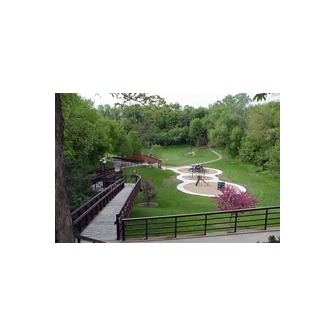Appleton Memorial Park





Appleton shares its history with Lawrence University, for the two grew simultaneously. The close relationship established in the early years continues to exist.
Fur traders seeking to do business with Fox River Valley Indians were the first settlers in Appleton. Hippolyte Grignon built the White Heron in 1835 to house his family and serve as an inn and trading post.
With the financial backing of Amos Lawrence, the Lawrence Institute was chartered in 1847. Samuel Appleton donated $10,000 to the newly founded college library, and in appreciation, his name was given to the community.
Appleton was incorporated first as a village in 1853 (John F. Johnston, the first resident, village president) and later as a city in 1857 (Amos Storey, Mayor).
Among the 36 individuals who have served as the city's chief elected official, John Goodland, Jr. had the longest tenure, with 18 years in office. Dorothy Johnson, Appleton's first female mayor, was elected in 1980 and served for 12 years. Timothy M. Hanna is the current mayor.
Education was, and continues to be, a priority in Appleton. In 1850, Daniel Huntley taught in the first free public school. The St. Mary Catholic Church opened the first parochial school in the community in 1864. The first 4 year high school began operating in 1876 in the Hercules School and Kindergarten was initiated in 1898 in Lincoln School. With population growth came the need for additional facilities. Today there are 24 public and 13 parochial schools.
Lawrence University's 84 acre campus, with 32 instructional, recreational and administrative buildings, 1200 students drawn from 45 states and 38 foreign countries, and a faculty of 114 men and women, lies east of the city's attractive, lively downtown. Students and faculty members supply the community with an endless array of music, drama and sports activities.
Appleton traditionally has had a commitment to vocational education. The Vocational School was established in 1912, and the first facility in the United States to be built exclusively for this purpose was erected here in 1917. When the State of Wisconsin was divided into vocational, technical and adult education districts in 1965, the local program was expanded and the Fox Valley Technical College was established.
Area business has been responsible for Appleton's economic prosperity and progressive attitude. The paper industry, beginning with the building of the first paper mill in the city in 1853, has been at the forefront of the development of Appleton, In order to provide electricity to this industry, the nation's first hydro-electric central station began operation in Appleton on September 30, 1882. Not too long afterward, in August of 1886, Appleton was the site for another national first, the operation of a commercially successful electric streetcar company. Electric lights replaced gas lamps on College Avenue in 1912.
Our community also made history when Alfred Galpin put together his own telephone in 1877, connecting his bank and his residence. Later, a druggist installed several phones in his store, linking them with those in other offices. This Wisconsin Telephone Company purchased this exchange in 1881.
Retail trade has also contributed to the area's progress. Because stores have always been concentrated on College Avenue, businessmen actively cooperate with city government in downtown redevelopment. A major convention center, the Paper Valley Hotel, was opened in 1982 and a shopping complex, The Avenue, commenced operations in March of 1987.
From its beginnings in 1853 as the Appleton Crescent, now the Appleton Post Crescent, the newspaper has provided coverage of the political, educational and industrial arenas of the community.
Cultural growth was encouraged early in Appleton. Central to that development has been public library service. Beginning in a reading room above a grocery store on College Avenue, the Appleton Public Library has developed over the years into a gathering place that offers opportunities for the entire community to "Learn, Know, Gather and Grow". Today it is located at 225 North Oneida Street and has a 360,000 volume collection including a wide range or popular and educational resources. In addition to materials, the library offers free computer access, notary service, meeting rooms for non-profits, study rooms and serves as a WIFI hotspot. The Library's webpage (www.apl.org) offers remote access to a "digital branch" that provides research databases, digital downloads and links to many unique local resources. The Library collaborates with many local organizations and has an extensive event calendar with programming for all ages.
The preservation of Appleton's history has been the work of the Outagamie County Historical Society. Its museum contains artifacts of Appleton's famous native son, escape artist Harry Houdini and author Edna Ferber, who grew up in Appleton. The museum showcases Appleton's heritage as a progressive, industrious community in Wisconsin's Fox River Valley.
The residents of our community are proud of Appleton's past and present, and they manifest a great confidence in its future and a dedication to its ongoing betterment.
Explore Related Categories







